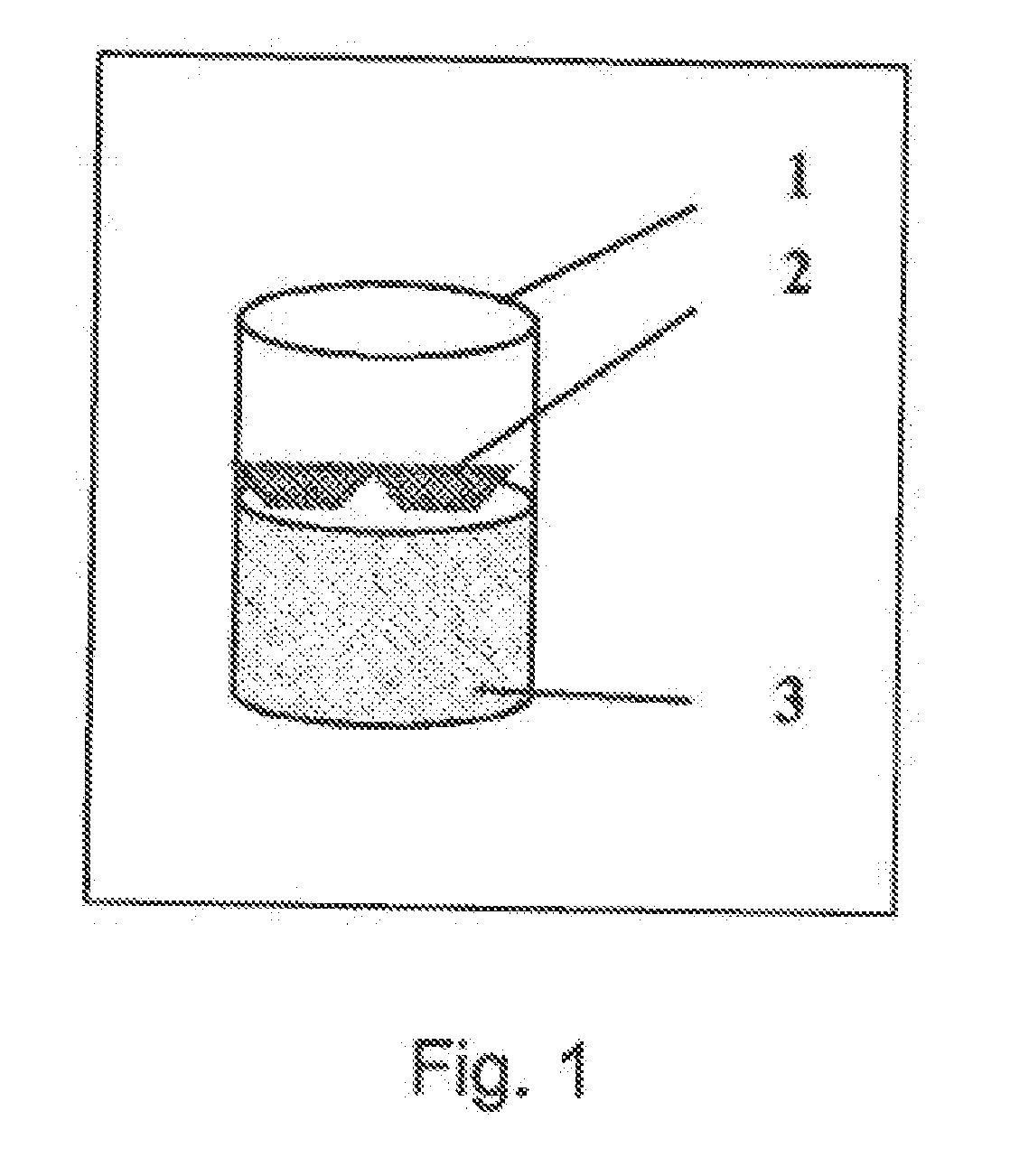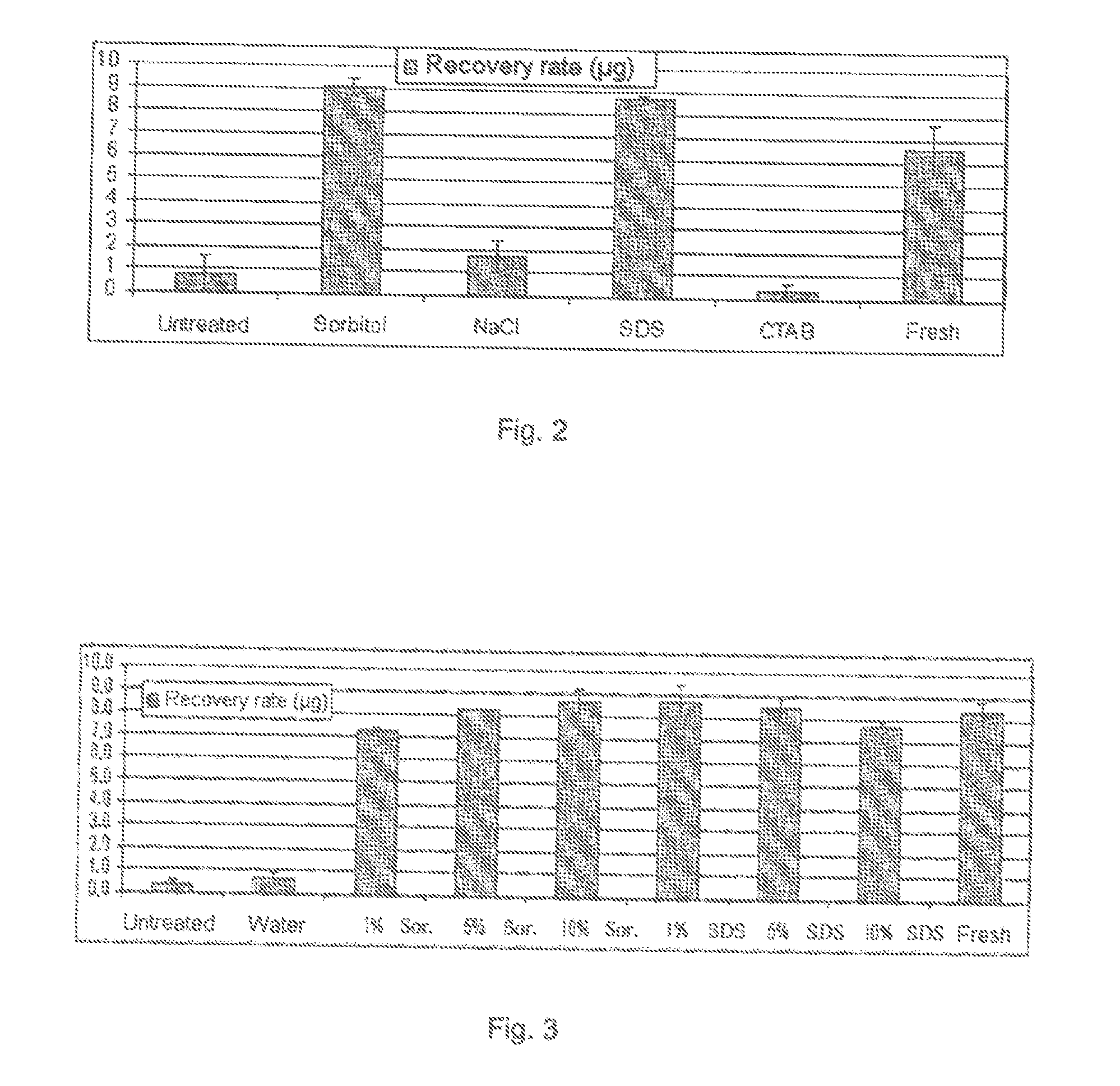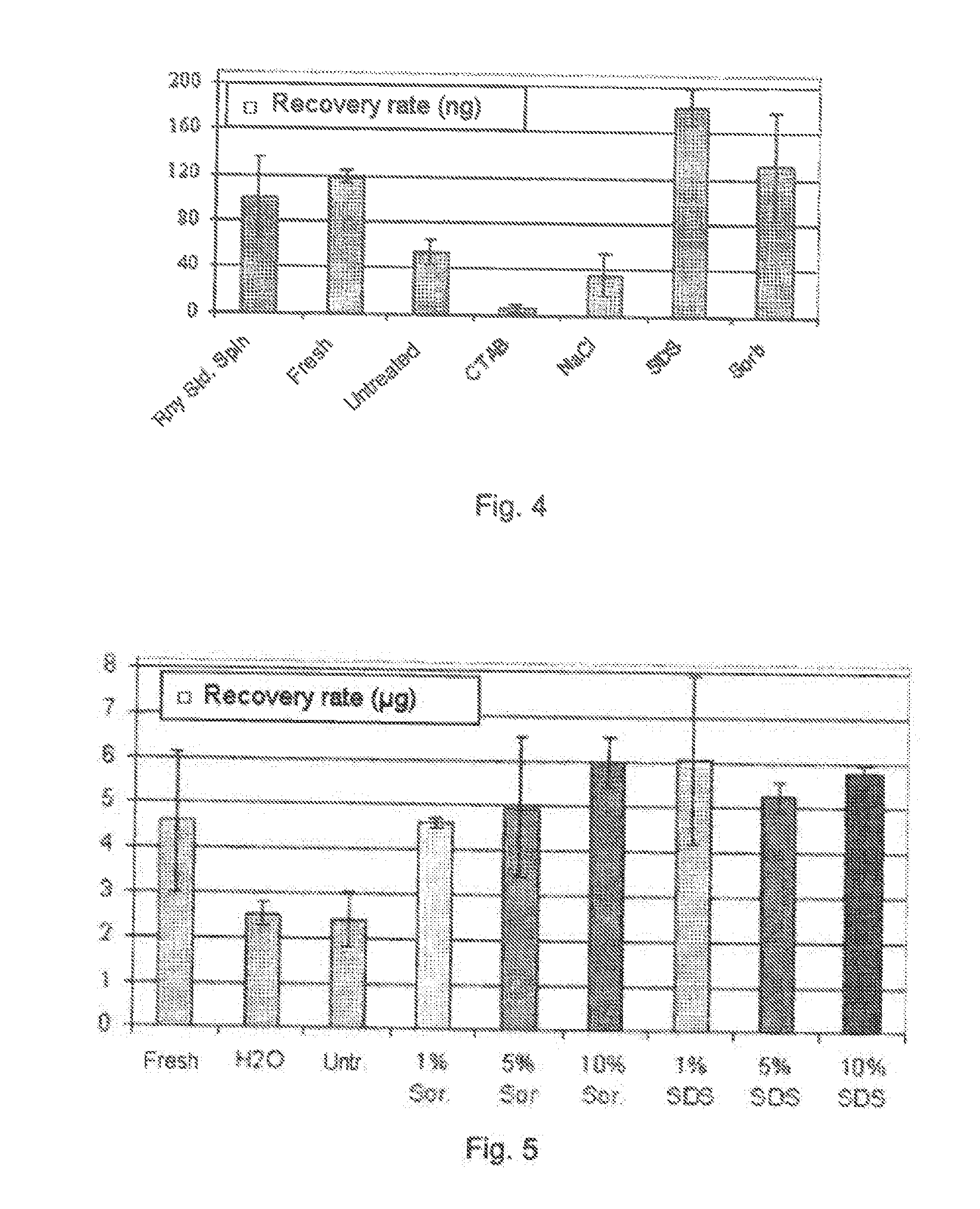Method of protecting membranes
a technology of membranes and membrane layers, applied in the field of methods and matrices protecting, can solve the problems of inability to completely prevent, decrease the ability to bind nucleic acids over (storage) time, and outgassing of plastics constituents
- Summary
- Abstract
- Description
- Claims
- Application Information
AI Technical Summary
Benefits of technology
Problems solved by technology
Method used
Image
Examples
example 2
[0057]The silica membrane disks were pretreated as described in example 1 and assembled into the Mini spin columns.
[0058]For the test, 5×105 HeLa cells per preparation were homogenized in 350 μl of Buffer RLT, mixed with the same volume of 70% strength ethanol, applied to the prepared spin columns, and centrifuged through the membranes. The spin columns were processed according to the standard RNeasy procedure (QIAGEN RNeasy Mini Handbook; Protocol: Purification of Total RNA from Animal Cells Using Spin Technology). Elution was carried out in 30 μl of RNase-free water. The eluate was measured photometrically at 260 nm.
[0059]The “recovery rate” of the silica membranes can be found in table 3 and FIG. 4. Shown in each case is the RNA-binding ability of a standard RNeasy column (QIAGEN), a fresh silica membrane, an untreated silica membrane, and a silica membrane pretreated with sorbitol, NaCl, SDS or cetyltrimethylammonium bromide (CTAB).
TABLE 3Comparison of various chemicals with reg...
PUM
| Property | Measurement | Unit |
|---|---|---|
| temperature | aaaaa | aaaaa |
| temperatures | aaaaa | aaaaa |
| temperature | aaaaa | aaaaa |
Abstract
Description
Claims
Application Information
 Login to View More
Login to View More - R&D
- Intellectual Property
- Life Sciences
- Materials
- Tech Scout
- Unparalleled Data Quality
- Higher Quality Content
- 60% Fewer Hallucinations
Browse by: Latest US Patents, China's latest patents, Technical Efficacy Thesaurus, Application Domain, Technology Topic, Popular Technical Reports.
© 2025 PatSnap. All rights reserved.Legal|Privacy policy|Modern Slavery Act Transparency Statement|Sitemap|About US| Contact US: help@patsnap.com



